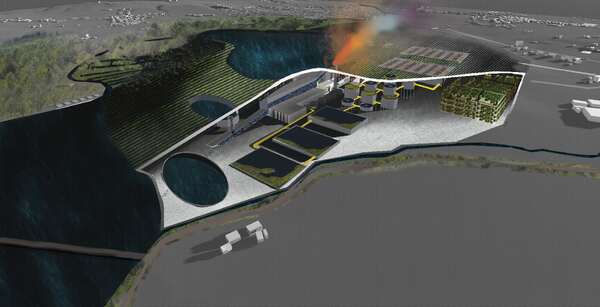Investigation
An initial investigation into the area surrounding the M58 revealed a stagnation or lack of development. By creating a database timeline of national and local economic, political, and infrastructural events, we identified the cause of the stagnation. Economic hardship post World War 2 led to the Greenbelt policy. The policy prevents Rural development in favour of promoting Urban regeneration.
Proposal
Thus, the thesis proposal was an entirely new political system for the UK creating two federal states: The Urban and The Rural. This allows for an exploration of what is truly Rural-centric design. The thesis came to the conclusion, through case study, that Rural-centric development uses industry to benefit its bucolic landscape and the landscape to benefit industries, rather than trading off these two assets as is common in the Urban-centric design of Rural Areas.
Case Study
The site houses a utilities plant which carves a whole in a bucolic agricultural setting. Investigating how both industries could develop and improve the rural landscape, an opportunity was identified to create a new landscape which served the industries while maintaining a rural appearance.
Creating a steep mega-form benefits the utilities energy consumption by reducing the need to pump and move water, and can similarly introduce water to agriculture to maximise yield without large energy consumption. The form also serves to house those industrial processes that would ordinarily need protecting from the elements or concealing to maintain a rural appearance.
Relevance
This thesis exploration has built on my existing interests into the social impact and accessibility of architectural design and the use of data and 3D modelling to drive and interrogate design. Using BIM modelling to interrogate design prior to site can help test new solutions for clients and communities and is something I hope to work more on in the future.


